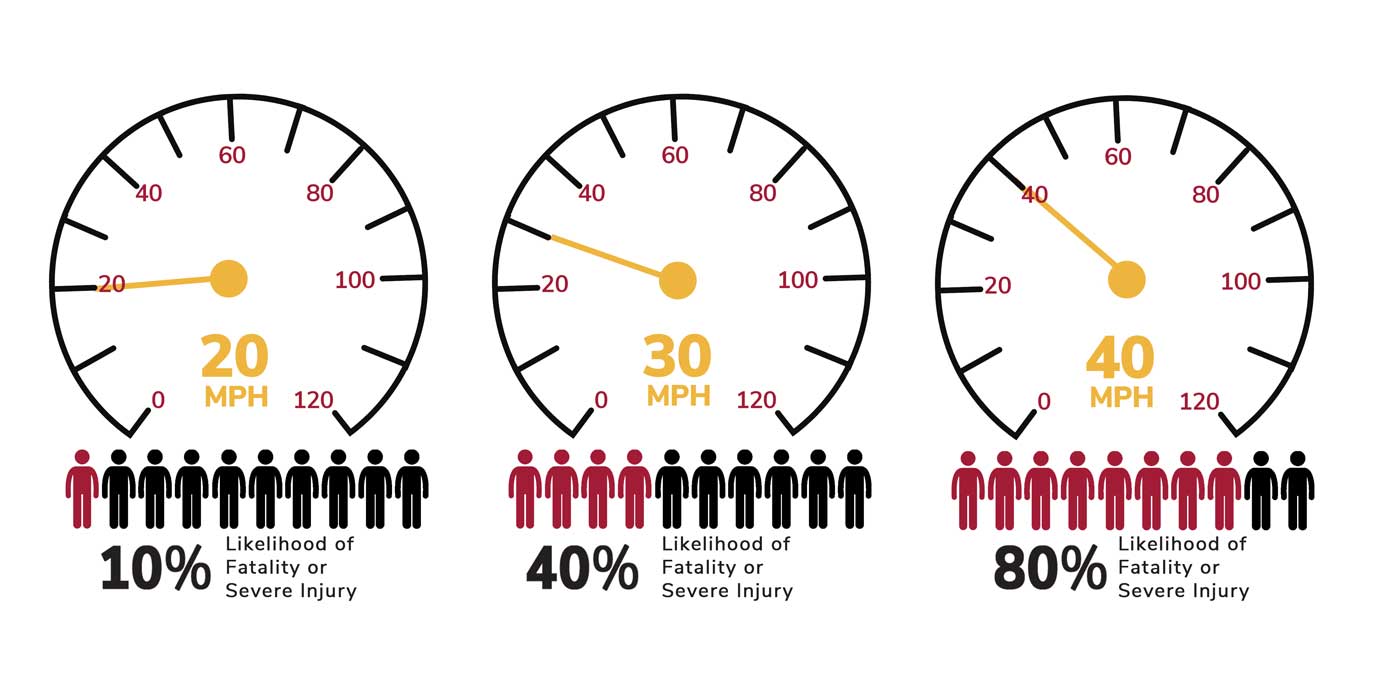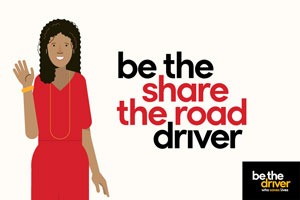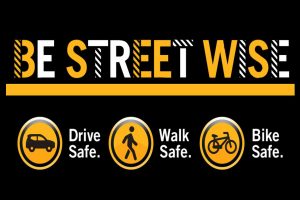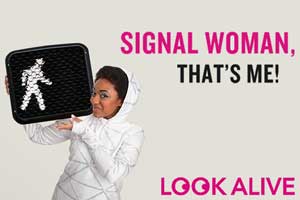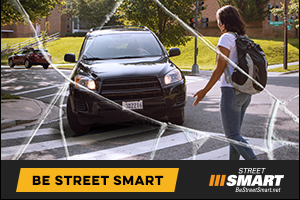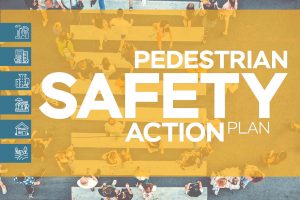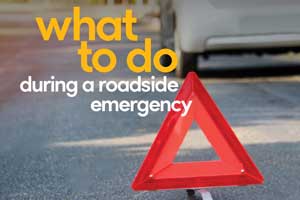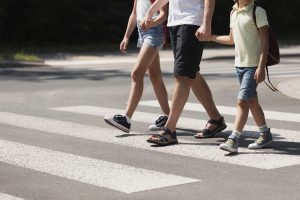Pedestrian & Bicyclist Safety
Pedestrians and bicyclists are some of the most vulnerable road users. Help protect them by paying attention and taking extra steps to keep them safe.
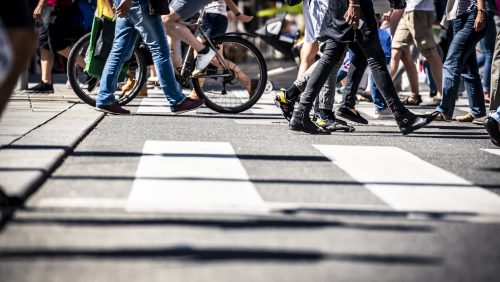
Walking or riding a bike is a great way to get from place to place and to also get some exercise. Every one of us is a pedestrian at some point during the day and it’s important that we all do our part to share the road. In a crash with a car, it’s usually no contest for someone who is walking or biking. Walk smart, Bike smart, and Drive smart to keep our communities safe for everyone.
PEDESTRIAN AND BICYCLIST SAFETY FACTS:
Maryland’s roadways should be safe places for all transportation modes. See all crash data.
-
92%
The percentage of pedestrian-involved crashes in Maryland in 2019 that resulted in injury or death.
Approximately one out of every four people killed in Maryland in a traffic crash was a pedestrian on foot.
-
789
The number of cyclists injured every year in Maryland in collisions with motor vehicles.
Of all crashes involving a bicyclist or pedal cyclist, over 80 percent resulted in an injury, more than twice the rate of drivers and passengers in all crashes statewide.
Let’s ALL Get There Safely
Pedestrian and Bicyclist safety is an issue that affects everyone in Maryland; young and old, drivers and walkers, during the day and at night. Everyone is a pedestrian in some capacity at one point or another. Many unnecessary injuries and fatalities occur because of intoxication, ignorance, or inattentiveness by either or both motorists and pedestrians. Roadways should be safe places for everyone and it’s important that we all do our part.
That also extends to bicyclists. Most people don’t know that bicycles are actually considered vehicles on Maryland’s roadways, just like cars or trucks. As such, drivers and cyclists alike must learn to share the road with one another and do whatever it takes to keep each other safe.
Slow down, pay attention, and always be alert for pedestrians and bicyclists.
Walk Smart, Bike Smart, Drive Smart
Walk Smart
You need to look up, look out, and stay alert. It’s tempting to pass the time on a walk by looking at your cell phone but it’s safer to pay attention to your surroundings, especially when crossing the street or walking near traffic.
Always follow traffic rules and cross at designated pedestrian crossings wherever possible. Be sure to obey pedestrian crossing signals: push the button and wait for the walk! Help drivers see you by wearing bright or light-colored clothes, and reflective items at night. If you must walk in the road, walk against traffic so that you can always see the vehicles coming.
Make eye contact with drivers. If they don’t make eye contact with you, there’s a good chance they haven’t noticed you, so you shouldn’t step into their path. While drivers are required to obey pedestrian crossing signals and stop for pedestrians in crosswalks, they might not see you. Pedestrians are the vulnerable road users who are killed or injured when struck by a careless driver breaking the law. Always walk defensively, even when you have the right of way.
Bike Smart
When you’re on a bike, always ride with traffic, signal the direction you’re heading, obey all traffic signs and markings, and follow all traffic safety laws. Being on a bike is not an excuse to ignore red lights or stop signs.
Bicyclists are often harder to see than cars or trucks. Wear reflective clothing and use a light if you’re riding at night so that you’re more easily seen. And when riding near vehicles or passing them, be alert to whether the driver may not see you.
Currently, bicyclists are not allowed to ride on sidewalks in Maryland unless a local jurisdiction specifically allows it; a number of local jurisdictions do allow it. Be aware that riding on sidewalks can put pedestrians at risk so be courteous and cautious when doing so. Be mindful of bridges, tunnels, and other stretches of road where riding is prohibited by law.
Drive Smart
Risky behavior behind the wheel can easily result in a collision and if you hit a pedestrian or a bicyclist, the results are devastating for our most vulnerable road users. Keep in mind that you’re moving a lot faster and are better protected. Even at relatively low speeds, car collisions can be deadly for those on foot or bike.
Obey all traffic safety laws and follow all traffic signals. Keep an eye on bikes riding on the road or in bike lanes, and always give plenty of room – – at least 3 feet – – to bicyclists when passing them. Stop for pedestrians in the marked as well as unmarked crosswalks. If you see other cars stopping or slowing, be aware that they may be stopping or yielding to someone on foot or bicycle – – you are required to stop too.
There are times that pedestrians and bicyclists may not see you approach. They may not have time to react if you are speeding or if they are distracted. Look Up, Look Out, and Stay Alert!
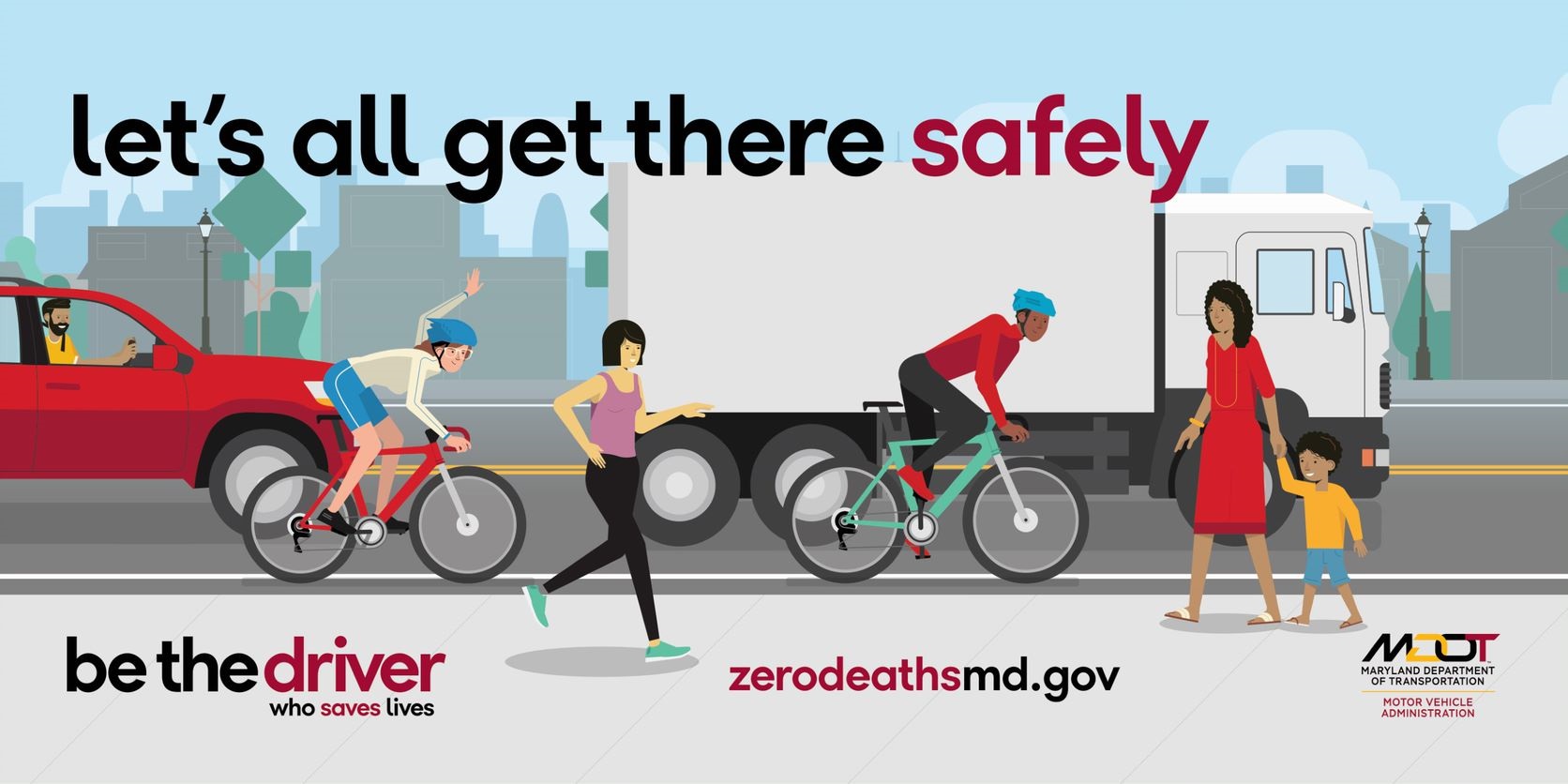
Pedestrian And Bicyclists Campaigns
Maryland Highway Safety Office has created and supports multiple campaigns related to pedestrian and bicyclist safety.
Be The SHARE THE ROAD Driver
Drivers, bicyclists, and pedestrians all have a responsibility to share the road. Be the SHARE THE ROAD Driver reminds all road users that no matter how you travel to your destination, we should work together to get there safely. This includes stopping for pedestrians, giving bicyclists 3 feet of space when passing, and using crosswalks or intersections.
Be Street Wise
The Be Street Wise campaign reminds everyone to follow the rules of the road and traffic laws. The goal of the campaign is to make Maryland roadways safer. MDOT SHA uses a context-driven approach in the planning and engineering of roadways to provide access and mobility for all users. Education must always support engineering, and that’s why Be Street Wise is so important.
Look Alive MD
People walking and biking in the Baltimore region cross paths with cars, trucks, buses, and other vehicles every day. The Look Alive campaign works to raise awareness about pedestrian and bicycle safety and highlights enforcement of the laws that protect people walking and biking.
Made You Look - MICA
Made You Look is a collaboration between MICA’s Center for Social Design and MHSO to make Baltimore a safer place for pedestrians and bicyclists by increasing visibility on two levels: (1) raising the visibility of individuals walking or biking in the city and (2) making local safety concerns visible to policymakers.
Street Smart
Since 2002, The Metropolitan Washington Council of Governments' Street Smart program has worked to protect vulnerable road users by raising awareness about pedestrian and bicycle safety. The region-wide public safety campaign educates drivers, pedestrians, and bicyclists on safe use of roadways in the District of Columbia, suburban Maryland, and Northern Virginia.
Pedestrian Safety Action Plan (PSAP)
MDOT SHA's Pedestrian Safety Action Plan (PSAP) is intended to improve roadway safety and balance access and mobility in all contexts throughout Maryland. MDOT SHA will work with communities to improve pedestrian safety by identifying challenges, setting goals and objectives, focusing on areas of need, setting priorities, and taking action.
What To Do During A Roadside Emergency?
Multiple state agencies have come together to provide guidance to motorists to keep them and others safe in the event of an emergency incident, minor vehicle crash while traveling, or a vehicle breakdown. If you must leave your vehicle, you then become an endangered pedestrian.
